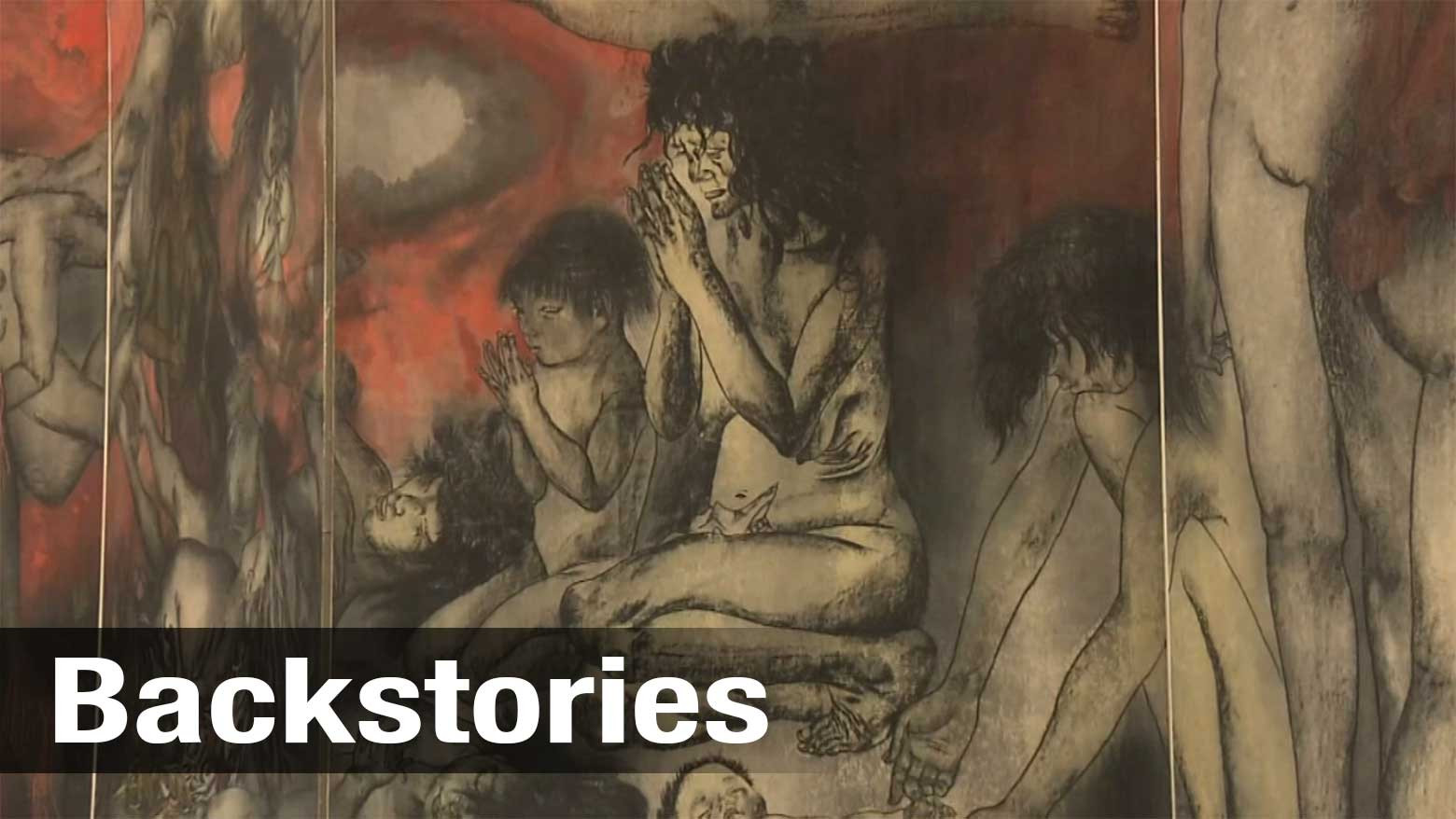A small but special gallery stands by a river surrounded by greenery in Saitama Prefecture, northwest of Tokyo. It’s a tranquil place, where the only sound you hear is the chirping of birds. But the artworks it contains have a very different tone.
The “Hiroshima Panels” are a 7-meter-long paintings that show twisted limbs, people roaming like ghosts, flames engulfing victims and naked corpses piled high.
“They are so vivid that I can’t think of them as paintings,” said one recent visitor.
Maruki Iri and wife Toshi started the project five years after the bombing and spent almost three decades on it, eventually producing 15 paintings.

In 1967, they built a permanent home for their art, and for more than half a century since, the Maruki Gallery has been testifying to the atrocities of war.
But it's under threat now as age gets the better of the building. The ceiling directly above the first of the Hiroshima Panels is leaking and beginning to peel away. When torrential rain hits, water gushes in. Insects have eaten away at some of the panels. And curator Okamura Yukinori is struggling to prevent damage from UV light, humidity and heat.
Okamura says the artwork needs a new home as soon as possible.

When the coronavirus pandemic struck, and the facility was forced to close for two months, Okamura saw it as a chance to make changes. "I thought it was time we reconsidered how we operate the gallery, which has mainly relied on the number of visitors to get by."
He found an ally in Iwasaki Yumiko, who’s interest in the panels was piqued when she was a child viewing them in a book. A bilingual interpreter with a background in web creation, Iwasaki came up with the idea of creating a virtual tour of the gallery, in Japanese and English, that people could access from anywhere in the world. She set up a crowdfunding page that has raised more than $8,000 so far. The work is already underway and they hope to have an early version ready by August 6, the anniversary of the bombing.

Iwasaki says the next step will be to raise money to rebuild the physical premises. She says the messages of the paintings are still relevant today, so it's important that people see them.
"They are all about empathizing with the pain of others,” she says. “That’s the universal message of the Marukis. The world is very unstable with COVID-19, the gap between the rich and the poor, and the problem of racial discrimination. I think it’s important to send this message to the world now."
And this time the message will be preserved in digital format, safe from decay and the ravages of nature.

